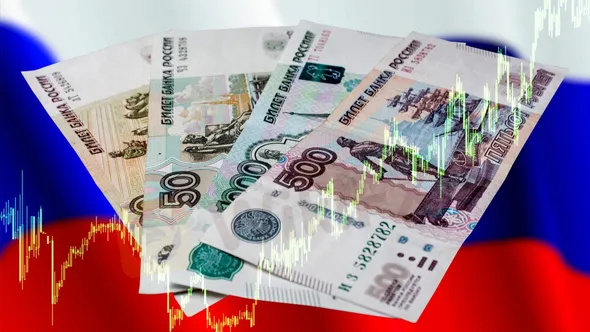简体中文
繁體中文
English
Pусский
日本語
ภาษาไทย
Tiếng Việt
Bahasa Indonesia
Español
हिन्दी
Filippiiniläinen
Français
Deutsch
Português
Türkçe
한국어
العربية
Russia Central Bank Cuts Key Rate for Third Time on Stronger Ruble
Abstract:The Bank of Russia Thursday lowered its key interest rate to 11% from 14%.

Russia's central bank cut its key interest rate for a third time since early April as it sought to steady a strengthening ruble and support a faltering economy.
The Bank of Russia Thursday lowered its key interest rate to 11% from 14%. Following two rate cuts in April, that largely reverses a doubling of the key rate in the immediate aftermath ofRussia's invasion ofUkraineand the Western sanctions that it provoked.
The initial hike to 20% from 9.5% in late February was intended to support a rapidly weakening ruble and limit a surge in inflation as imports became more expensive. But the ruble has since regained lost ground and made some gains asRussia's foreign currency revenues from exports of oil and gas have surged thanks to higher prices.
“Inflationary pressure eases on the back of the ruble exchange rate dynamics as well as the noticeable decline in inflation expectations of households and businesses,” the central bank said in a statement.
But while the currency and the country's financial system have stabilized, the outlook for the economy is gloomy, with Western sanctions limiting the country's ability to import needed goods, services, parts and equipment. The United Nations last week said it expectsRussia's economy to contract by 10.6% this year.
“External conditions for the Russian economy are still challenging, considerably constraining economic activity,” the Bank of Russia said. For more Forex news, please download WikiFX- the Global Broker Regulatory Inquiry APP.
Disclaimer:
The views in this article only represent the author's personal views, and do not constitute investment advice on this platform. This platform does not guarantee the accuracy, completeness and timeliness of the information in the article, and will not be liable for any loss caused by the use of or reliance on the information in the article.
Read more

Want to Improve Your Forex Trading Success Rate? Get to Know the Five Key Players in the FX Market!
This article delves into the primary participants of this colossal market, including importers and exporters, Forex brokers, commercial banks, central banks, and speculators. By understanding the roles of these key players, traders can better navigate the Forex landscape.

Ringgit Weakens Amidst Battling Global Economic Turmoil
On Tuesday, the ringgit dipped to a low of 4.7900 against the US dollar, driven by apprehensive investors seeking refuge in the safe haven currency amidst escalating geopolitical tensions. Over the past week, the local currency has depreciated by nearly 0.9% against the US dollar, marking its weakest performance since January 1998. In conjunction with this decline, Bank Negara Malaysia has reiterated its commitment to bolstering the ringgit.

WTI hovers around $77.00 with a positive momentum, focus shifts to US PCE, Oil Rig Count
West Texas Intermediate (WTI) oil price pauses its two-day winning streak but is anticipated to conclude the week on a positive note, trading near $77.00 per barrel during the Asian session on Friday.
FCA Warns an Unauthorized Broker Named 'Sapphire Markets'
On December 7, the UK's Financial Conduct Authority (FCA) regulator warned against an unauthorized broker called Sapphire Markets, reminding the public to be aware of financial safety.
WikiFX Broker
Latest News
Geopolitical Events: What They Are & Their Impact?
Volkswagen agrees deal to avoid Germany plant closures
Top 10 Trading Indicators Every Forex Trader Should Know
TradingView Launches Liquidity Analysis Tool DEX Screener
MultiBank Group Wins Big at Traders Fair Hong Kong 2024
WikiEXPO Global Expert Interview: Simone Martin—— Exploring Financial Regulation Change
'Young investors make investment decisions impulsively to keep up with current trends' FCA Reveals
Why Do You Feel Scared During Trade Execution?
CySEC Settles Compliance Case with Fxview Operator Charlgate Ltd
Malaysian Influencer Detained in Taiwan Over Alleged Role in Fraud Scheme
Currency Calculator


